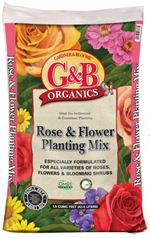|

      
|
 |
FEATURED QUOTE : "In order to live off a garden, you practically have to live in it." |
Memorial Weekend Hours: Saturday 5/23 8:00-5:30 Sunday 5/24 9:00-5:30 Monday 5/25 9:00-4:00 |

|
Planning an outdoor celebration for Memorial Day? Show your patriotism by planting some beautiful containers to adorn your deck in the traditional colors--red, white and blue! |

|
Gardening can be a great way to relieve stress, get exercise, and to feel connected to the environment around you. These benefits can be as good for your kids as they are for you! Besides the obvious benefits, spending time with your kids in the garden will give you lots of opportunities to teach them about the world around them, as well as give you a chance to spend time together without the distraction of phones, televisions, or video games. Kids love to watch things grow, and once they've seen a pea turn into a shoot, and then a vine, flowers, and eventually delicious pea pods, the dinner-time veggie battle will be half over. Some of the easiest and most fun things to grow are peas, carrots, cucumbers, kale, lettuce, strawberries, and cherry tomatoes. Besides being easy, they also lend themselves to being great snacks without having to cook them. The easiest place to start gardening with your kids is to set aside a corner of your garden just for them. Plant things together, and check on them frequently to watch their progress. Teach your child which plants are weeds, which are yours, and how to tell the difference. Show them which bugs to squish (caterpillars), ones to avoid (bees), and which ones should be kept around to eat the pests, like lady bugs and praying mantis. Even a tiny garden can be a great opportunity for some great quality time with your kids. If you keep it simple and keep it fun, they might even love it as much as you do! |

|
While mandatory water restrictions loom, the best way to avoid them or be prepared to make do is to think about how you can lower your water usage at home. Luckily, you won't have to resort to keeping your showers to once a week yet, because most water usage, and potential for reduction, is outside your home. Here are some ideas to lower your water consumption without surrendering your yard to the desert.
Saving water is easy, and it has the potential to save you some cash and make your yard much more sustainable. If everybody reduced their usage a bit, the savings could be huge. |

|
These days, not even a backyard garden is free from danger. The vegetables and flowers over which you've labored so lovingly are prey for aphids, cutworms, mealy bugs, and many others. What to do? Using chemical pesticides is so last century. We now know that broad spectrum conventional pesticides not only kill the bad bugs, they rub out the good ones as well. Without natural predators in our gardens, it's a world of insects gone wild. In fact, more and more insects are showing resistance to heavy duty chemical pesticides. In a controlled experiment, fruit flies were exposed to DDT. Not only did it not kill them, the fruit flies had developed a way to metabolize the pesticide and use it as food! If you've ever read a newspaper, a web blog, or watched tv, you know how vitally important it is to eat safe food. No matter how carefully you wash your vegetables that have been treated with chemicals, there is no guarantee that they don't still contain traces. What to do? Go natural! Fight bugs with bugs! Beneficial insects are the latest fad in fighting the bad bugs in your garden. Take for example, the common green lacewing (Chrysoperla carnea). Actually, take the offspring of this “aphid lion”; the adult lays her eggs on the foliage, each on the top of hair-like filaments. In a few days, the lacewing eggs hatch and the tiny larvae emerge with their voracious appetites for aphids, spider mites and red mites, thrips, whiteflies, long-tailed mealy bugs, the eggs of leafhoppers, moths and leafminers, small caterpillars, beetle larvae and tobacco budworms. Whew! The larvae look like miniature alligators with tiny ice tong-like pincers that inject paralyzing venom. They then draw out the bodily fluids of their victim. Hey. We didn't say that controlling the bad bugs in your gardens was a pretty thing. We just want you to know that there are safer and more naturally effective options to dealing with pests. It's become quite a business selling these mighty defenders of the healthy garden. Green lacewing larvae can be released on numerous plants such as cotton, sweet corn, potatoes, tomatoes, peppers, eggplants, apples and strawberries. About 10 lacewing eggs per plant, or 1,000 eggs per 200 sq. ft. will control a moderate aphid population. During the two to three weeks in the larvae stage they will each devour up to 200 victims a week. After this, they pupate by spinning a cocoon with silken thread and approximately five days later the adults emerge to complete the life cycle. There are five or six overlapping generations each season. Since the larvae feed for about two weeks, a second release, two weeks later, might be necessary. Chrysoperla carnea, the “original” green lacewing just may prove to be the best all-purpose predator for your home garden. |

|
Some gardens can be pretty, some can be manicured and some can look wild and woolly, but there's nothing like a fragrance garden to tickle the nose and stimulate the senses. Fragrance gardens can be created using many different garden design themes; the only requirements are using plants with flowers or foliage that is pleasingly fragrant. You can go Cottage, Mediterranean, Victorian, Woodland or something in between, since all can benefit from the use of fragrant plants and flowers. A fragrance garden doesn't have to be just sweet and perfumed. It can also be soothingly aromatic, with both delicate and bold scents. You can even select when you want your garden to emit its fragrance, be it morning, mid-day or night time! Plant your garden using a good quality soil amendment and feed in the summer to ensure healthy growth. Most plants get their fragrance from essential oils in various parts of the plant foliage or flowers. Foliage fragrance is often released by touch, while flowers don't need an extra nudge to share their delights. Position foliage-fragrant plants along pathways, borders, or overhead on an arbor or trellis where their aroma will be released when you brush past them. Some flowers can be enjoyed from far away, while others might require you to get close to inhale their sweet perfume. We're sure you'll find some scents you love among our selection. |
 |
|
Do ladybugs really help control bad insects? Answer: They sure do! In fact, ladybugs are one of the most effective predatory insects around--and love to make a meal out of bad ones. But give them time to do their thing. If you get too impatient with them, they just might "fly away home." Make sure your garden friends are happy by providing them with water and shelter. Remember that good bugs are living creatures and they have feelings too. It is best to release them in the evening or early morning, just after you have watered the garden. This will help keep them in the garden. It is also better to release them in small batches all around your garden than in one big group; otherwise, they might get all huffy and start duking it out for the territory. Ladybugs are more likely to remain in your garden if there is a ready food supply. It is important to provide them with an alternative food source when meals of pest insects are scarce. Flowers produce nectar and pollen, which ladybugs also need to survive. Plan your garden to feed beneficial insects by choosing a variety of plants that will bloom as many months of the year as possible. Don't be surprised if they leave after they have removed all your bad insects, though. They will only stick around for as long as there is a good food source in your garden. |

|
What You Need:
Step by Step:
Yield: 4 servings |
 click here for a printer friendly version of this page
click here for a printer friendly version of this page
 |
Written content © Garden Partners LLC, or respective authors. All Rights Reserved. Privacy Policy. All written content contained in this site is protected by United States copyright law and may not be reproduced, distributed, transmitted, displayed, published, or broadcast without prior written permission of Garden Partners, LLC. You may not alter or remove any trademark, copyright or other notice from copies of the content. |



